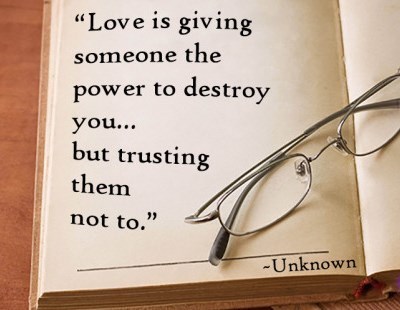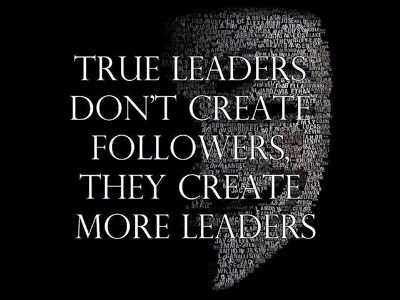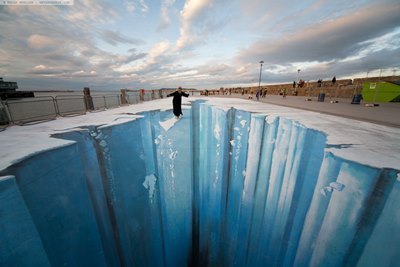Jeremie Averous's Blog, page 111
December 16, 2014
Where Organization’s Innovations Come From, and How to Foster Them
There is a general rule of thumb: “80% of process innovations come from inside companies whereas 80% of product and services innovations come from partners and clients“.
 The French futurist Denis Ettighoffer underlines: “too often, the utilization of networks by companies remains limited to productivity development rather than the development of creativity processes that are key to the development of value“.
The French futurist Denis Ettighoffer underlines: “too often, the utilization of networks by companies remains limited to productivity development rather than the development of creativity processes that are key to the development of value“.
I do also observe how much the “not invented here” syndrome, combined with a very low permeability of conventional organization’s borders, conspire to make companies cut off from the most precious source of innovation: clients, partners and other interested stakeholders. The development and maintenance of a highly connected network of followers is not just for one-way marketing, it needs for two-way value creation. Organizations need to get (and maybe reward) value from their clients, partners and suppliers.
This requires a deep change of strategic approaches to external partnerships. Is your organization ready for the change?
Source: very interesting article (in French) on ParisTech Review on ‘the Company of the future‘. Translation by Fourth Revolution Blog.
December 13, 2014
Why Accepting Yourself Will Change the World
Building up on our post ‘Why You Need to Accept Yourself First to be Able to Change‘, we can go further and state that being ourselves does not only help ourselves change, but will also change the world.
 On that, let us quote extensively Carl Rogers from his famous book ‘On Becoming a Person: A Therapist’s View of Psychotherapy‘: “the paradoxical aspect of my experience is that the more I am simply willing to be myself, in all this complexity of life and the more I am willing to understand and accept the realities in myself and in the other person, the more change seems to be stirred up.”
On that, let us quote extensively Carl Rogers from his famous book ‘On Becoming a Person: A Therapist’s View of Psychotherapy‘: “the paradoxical aspect of my experience is that the more I am simply willing to be myself, in all this complexity of life and the more I am willing to understand and accept the realities in myself and in the other person, the more change seems to be stirred up.”
Why is that? As Carl Rogers continues, “It is a very paradoxical thing — that to the degree that each one of us is willing to be himself, then he finds not only himself changing; but he finds that other people to whom he relates are also changing. At least this is a very vivid part of my experience, and one of the deepest things I think I have learned in my personal and professional life.”
Did you still hesitate? Be yourself fully. Change yourself and change the world!
December 11, 2014
What People Will Remember from You
I love that quote: “People will forget what you said, people will forget what you did, but people will never forget how you made them feel”- Maya Angelou.
 This is true in all sorts of settings, so let’s review a few areas where it is applicable:
This is true in all sorts of settings, so let’s review a few areas where it is applicable:
When doing public talks or presentations, the real important experience lies at the emotional level. This requires physical comfort, and creating strong emotions in the audience, either through stunning experiences and images, or by referring to people’s own emotional-laden issues.
When creating art, paintings, writing a book or cutting a movie, the emotions that will be created in the viewer is what will make the creation memorable on the long term.
When working with people in a team, what people will remember is any emotions, good or bad, you’ve created during that time. This also applies to one-off interviews.
The list is long. My points was to emphasize how this quote, which is most often used in the field of romantic relationships, can be applied throughout our lives.
You want to be remembered? Create emotions.
December 9, 2014
Why ‘Relationship Capital’ Becomes Essential for Organizations
“The modern company becomes a relationship organization and thus needs to develop a relationship capital” says the French futurist Denis Ettighoffer,
 “The methods whereby ideas and related value are created in the Collaborative Economy have nothing to do with the traditional productivity enhancement methods. In the networked organization, the relationship logic replaces departmental and functional logic“.
“The methods whereby ideas and related value are created in the Collaborative Economy have nothing to do with the traditional productivity enhancement methods. In the networked organization, the relationship logic replaces departmental and functional logic“.
Furthermore, “The continuous expansion of knowledge creates a rupture in the way wealth is apprehended. What creates value is not any more the physical side of work but the creative and networked component of the activity of each human contributor. Getting access to the adequate ideas and knowledge becomes as vital as getting access to rare materials or even to capital, because knowledge allows to replace physical resources that might be missing“.
Relationship capital is not yet measured consistently, although it is certainly what makes the value of the most well-known start-ups of the Fourth Revolution. In the future we can expect that this component will become one of the most important performance measurement for organizations.
When do you start focusing on developing your relationship capital?
Source: very interesting article (in French) on ParisTech Review on ‘the Company of the future‘. Translation by Fourth Revolution Blog.
December 6, 2014
How Love is About Giving Someone the Power to Destroy Us
The other day I was reading this great definition of Love – “Love is giving someone the power to destroy us and trusting they won’t use it“.
 This is such a true statement that it stopped me in my tracks. Here are a few aspects I find great in this statement:
This is such a true statement that it stopped me in my tracks. Here are a few aspects I find great in this statement:
love is about giving first,
it is about giving unconditionally, even with the risk of self-destruction,
love is about creating vulnerability,
love is about giving others power over ourselves.
True love might not even consider whether the other will use it to destroy us. It then becomes secondary.
Vulnerability is at the root of all great relationships, as long as it is given voluntarily. How do you render yourself vulnerable to your loved ones?
December 4, 2014
How Real Relationships Induce Change and Cannot Remain Static
“Real relationships tend to change rather than to remain static” says Carl Rogers in his famous book ‘On Becoming a Person: A Therapist’s View of Psychotherapy‘.
 Real relationships are relationships that go beyond the superficial into real giving and receiving. They are relationships in which we are authentic and were we discover ourselves.
Real relationships are relationships that go beyond the superficial into real giving and receiving. They are relationships in which we are authentic and were we discover ourselves.
Thus, necessarily, this quality of relationships will tend to create change in ourselves and the relationship equally needs to change to adapt to these new circumstances.
Following the same idea, Carl Rogers, notes, in his practice of psychotherapy, “If I can provide a certain type of relationship, the other person will discover within himself the capacity to use that relationship for growth, and change and personal development will occur.”
Poor relationships foster defensiveness, passivity, and prostration. Real relationships, on the contrary, foster growth and expansion. Their potential can be unlimited.
Review your relationships and ask yourself which are those that change and mature over time. These might be much deeper relationships than the others.
December 2, 2014
How True Leaders Focus on Growing People
What makes the difference in terms of leadership is how true leaders focus on developing people. They understand it is vital part of their duty, and how only this behavior creates the conditions for great work.
 “The leaders of great organizations do not see people as a commodity to be managed to help grow the money. They see the money as the commodity to be managed to help grow their people.” – says Simon Sinek in ‘Leaders Eat Last: Why Some Teams Pull Together and Others Don’t‘.
“The leaders of great organizations do not see people as a commodity to be managed to help grow the money. They see the money as the commodity to be managed to help grow their people.” – says Simon Sinek in ‘Leaders Eat Last: Why Some Teams Pull Together and Others Don’t‘.
But that should not stay at the level of lip service and budget assignment, or even the creation of company university. A clear symptom of this is when true leaders go themselves to teach classes to their managers and employees; from the company introduction to newcomers to advanced classes about managerial and leadership skills.
Actually, the question merits to be asked. If a leader does not spontaneously involve himself in mentoring and training, and spend a significant par of his time in these activities. can he really be a true leader?

November 29, 2014
Why We Should Welcome Uncertainty in Our Lives
“It’s funny that when people look back at their careers, the moments that stand out the most – the things they’re most proud of – are often the times that were the most uncertain” says Hugh MacLeod of Gapingvoid.

How do you feel in times of uncertainty? And if that was an illusion?
He continues about an example of great success (Netflix when it moved in video streaming instead of sending DVD through the post): “When they were stressed and afraid and not really all that sure anything was going to work out for the best…in fact, they were quite sure it wasn’t. But they kept pushing, until something gave way. That’s the thing about success. It doesn’t appear until it’s over and the results are in.”
It is obvious that it is when we push beyond our comfort zone that things feel uncertain for us. It is when we persist in our idea even if it looks weird that we are able to cross the chasm and reach a new state that seems more stable.
Don’t be afraid of uncertainty. Welcome it even if that is not comfortable and even if it exposes you to the critics of those who remain on the safe side.
Just go for it.

November 27, 2014
How to Make Commercial Departments More Creative
Following our post ‘How Commercial Is One of the Most Creative Activities‘, let us dwell a little bit into the organization of most commercial departments – and how these organizations seem to be designed to stifle creativity rather than fostering it.
 I am always amazed at how many commercial departments are run in a very bureaucratic manner, with a focus on compliance to procedures, requirements to report continuously and long-winded PowerPoint presentations even on the topic of marketing efforts or even on the status of negotiation with some prospects.
I am always amazed at how many commercial departments are run in a very bureaucratic manner, with a focus on compliance to procedures, requirements to report continuously and long-winded PowerPoint presentations even on the topic of marketing efforts or even on the status of negotiation with some prospects.
Of course, compliance is needed to make sure that certain limits are not exceeded; reporting and creating databases of commercial efforts is useful. But there needs to be space for creativity and I can’t find it in a number of commercial departments. Clever solutions need to be found to create the most compelling (and competitive) offer. This requires time to think and experiment; time to brainstorm and produce quality work (note – quality work is generally in the form of a text document, not of a set of slides). Where is that space for creativity?
Create a formal space for creativity in your commercial department and ensure for your organization a definite competitive advantage! And for my sake, reduce your addiction on PowerPoint slides: get to the work of creating real documents that will force you to put your ideas in order!

November 25, 2014
How to Leverage Contracting as a Creative Activity
Commercial activities are to be creative. Does that mean contract development and negotiation is also a creative activity? My answer is clearly yes – with some safeguards. However most organizations focus on the safeguards and forget the creative part, with sometimes dire consequences.

This Thick Contract is the result of a creative process!
Safeguards need to be implemented to protect the organization – the legalese that is often boring, sometimes useful and never to be forgotten for your piece of mind. I am talking about limits of liabilities, mutual indemnities and all these clauses that you must have in your contract to protect yourself in case things go really awry.
Still beyond this we should not forget that a Contract is there to reflect a commercial deal; and that a commercial deal is fundamentally the result of a creative process; therefore, for the contract to be successful, it needs to reflect the creative result of the negotiation (which hopefully will make the safeguard clauses superfluous).
Contract Managers in the industry are too focused on establishing compliance to a set of norms. They do not understand enough that a Contract needs to reflect the outcome of a highly creative process whereby we have developed a commercial approach tailored to the situation. The contracting process (including compliance) and format needs to be flexible enough to accommodate this creativity – without certain bounds.
Let’s transform our contracting processes to account better for the creative nature of this endeavor!




